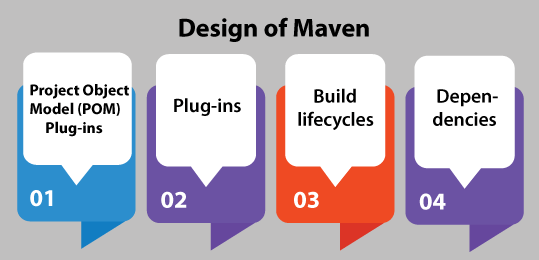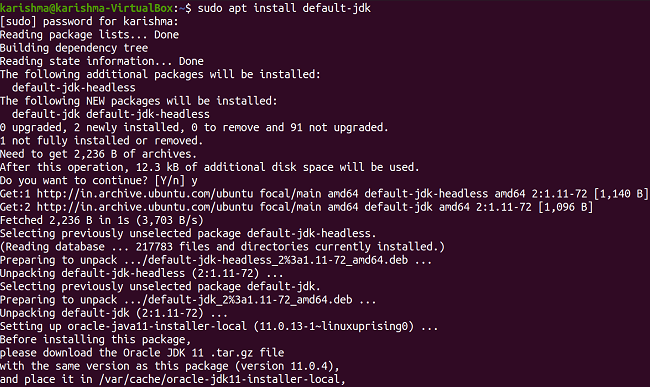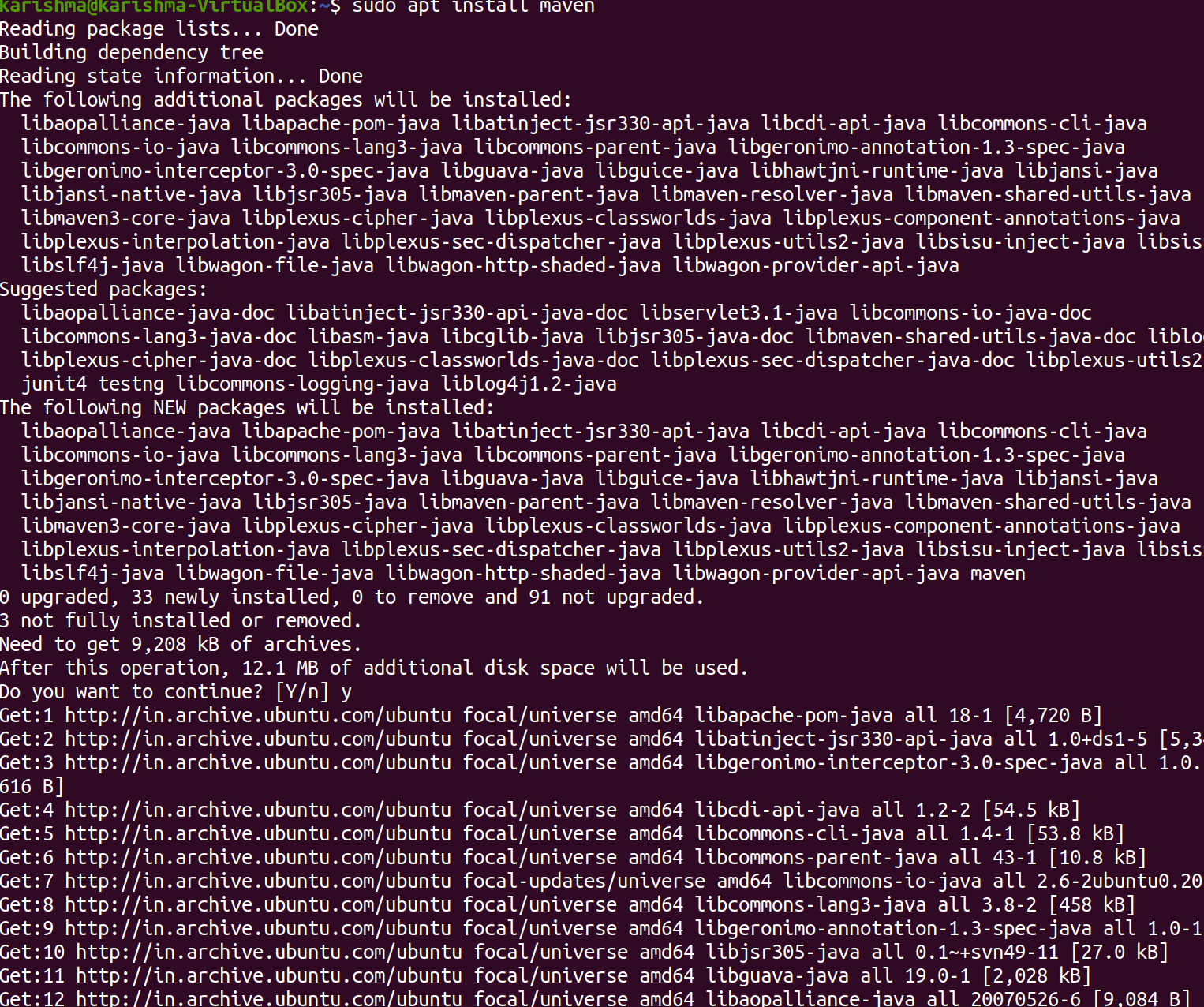Install Maven in UbuntuWhat is Maven?Maven is a tool of build automation used mainly for Java projects. Also, it can be used for building and managing projects which are written in is Scala, Ruby, C#, and other languages. The project of Maven is hosted via the Apache Software Foundation, in which it was the Jakarta Project part. Maven defines two aspects of establishing software: how software is established and its dependencies. It applies conventions for the establishment procedure, unlike earlier tools such as Apache Ant. Only exceptions are required to be described. An XML file defines the software project being established and its dependencies on many other external components and modules, the build directories, order, and required plug-ins. It provides the pre-defined code and packaging.
History of MavenMaven was established by Jason van Zyl and started in 2002 as the Apache Turbine sub-project. It was voted on and adopted as a top-level project Apache Software Foundation in 2003. The release of Maven was the demanding first milestone, v1.0, in July 2004. In October 2005, Maven 2 was announced v2.0 after about 6 months in its beta cycles. In October 2010, Maven 3.0 was published, being particularly backward compatible with the 2nd version of Maven. In 2018, Maven 3.0 information started trickling out. In April 2010, the first Maven 3.0 beta version was published after 8 alpha versions. Maven 3.0 has reconstituted the core Project Builder infrastructure providing the file-based representation of POM being decoupled through its in-memory object representation. It has increased the possibility for the add-ons of Maven 3.0 to take advantage of non-XML-based project definition files. Suggested languages include Groovy, YAML, and Ruby.
Interoperability of MavenAdd-ons to various famous IDE (Integrated Development Environments) targeting Java exist to offer Maven integration with the source editing and build mechanism tools of IDE, permitting Maven to arrange projects from inside the IDE, and to configure the code completion classpath, focusing compiler errors, etc.
Also, these add-ons offer the ability to utilize the POM or alter the POM to decide the complete set of a project of dependencies within the IDE directly. A few built-in aspects of IDEs are absent when the IDE does not perform compilation anymore. For instance, the JDT of Eclipse can recompile an individual Java source file when it has been altered. Several IDEs operate with a flat group of projects rather than the folder hierarchy approved by Maven. It complicates the utilization of SCM systems when utilizing Maven in IDEs. Objectives of MavenThe primary goal of Maven is to permit a developer to assimilate the development effort's complete state in the shortest time. Maven deals with many areas of concern to attain this aim:
Also, third-party code analysis offers Maven plug-ins that include their reports in the typical information provided by Maven. Features of MavenThe following are some important features of Maven:
Design of Maven
Project Object Model (POM)A project object model facilitates every configuration for one project. The basic configuration covers the name of the project, its dependencies, and its owner on other projects, Also, one can configure a single phase of a build process, which is worked as plugins. For instance, one can construct the compiler plugin for using the 1.5 version of Java for compilation or describe the project packaging even when a few unit tests break down. Bigger projects should be categorized into many sub-projects and modules, each with its POM. Then, one can specify a root POM from which one can compile every module with one command. Also, POMs can acquire configuration from any other POM. Every POM by default acquires from its super POM. The super POM gives default configurations like default plugins, default source directories, etc. POM is short for "Project Object Model". It's a Maven Project's XML representation held inside a file called pom.xml. A project has configuration files, associated developers, a defect tracking system, licenses, organizations, the project URL, dependencies of the project, and every other little part that comes to provide code life. It's a one-stop-shop for everything interested in the project. A project doesn't need to include the code at all, hardly a pom.xml file, in the Maven world. Maven coordinatesPOM is the bare minimum that is allowed by Maven: groupId:artifactId:version is every necessary field (however, version and groupId don't need to be defined explicitly if they're acquired from any parent). These three fields behave much like a timestamp and an address in one. It marks a particular place within a repository, behaving like a coordinate system:
Plug-insMost functionality of Maven is inside the plugins. A plugin gives a group of goals that could be run with the help of the mvn [plugin-name] : [goal-name] command. For instance, a project of Java could be compiled with the compile-goal of compiler-plugin by executing the mvn compiler:compile command. There are many Maven plugins to build, test, run a web server, source control management, produce Eclipse project files, etc. These plugins are configured and introduced in the section, i.e., <plugins> of the pom.xml file. A few basic plugins are by default added in all projects and they have logical default settings. It however would be inconvenient if the archetypal build sequence of packaging, testing, and building a software project needed manually executing all respective goals:
The lifecycle concept of Maven manages this problem. A plugin is the main way for extending Maven. Integrating a Maven plugin could be implemented by extending a class, i.e., org.apache.maven.plugin.AbtractMojo. Build lifecyclesIt is a named phases list that could be used for giving sequence to goal implementation. One of the standard lifecycles of Maven is a default lifecycle, which has some phases in a particular order, which is mentioned as follows:
Goals given by plugins could be connected with different lifecycle phases. For example, the compiler:compile goal is by default connected with the phase, i.e., compile, while the surefire:test goal is connected with the phase, i.e., test. When the command, i.e., mvn test is run, Maven executes every goal connected with all phases up to and adding the 'test' phase. Maven executes the goal, i.e., resources:resources connected with the phase, i.e., process-resources, then compiler:compile, etc until it finally executes the goal, i.e., surefire:test. Also, Maven contains standard phases to clean the project and generate a project site. The project will be cleaned all time it was created if cleaning were the default lifecycle part. It is undesirable, hence cleaning has been provided its lifecycle. DependenciesDependency management is a central aspect of Maven. The dependency-handling mechanism of Maven is organized across a coordinate system recognizing individual artifacts like software models or libraries. Installing Maven in Ubuntu 20.04Apache Maven is an exclusive and advanced tool in the creation of projects typically corresponding to Java. It's an open-source tool that uses the Project Object Model encompassing an XML file for retailing the crucial information of a project, that culminates within the information related to the art project, configuration files, and its dependencies. We will require common knowledge over the commands and working of Linux, sudo commands recognizing, and the root user privileges for effectively installing Maven on the 20.04 version of Ubuntu. This tool is created for assisting its user in creating projects by reporting and documenting the central project regarding information proficiently. Maven qualifies as a best-suited tool to manage Java projects. Also, it contains built-in object commands for dealing with the code composition and packages. Installation Process of MavenThe installation process of Maven is short composite on three basic steps. Before starting these three steps, we can avail every benefiting aspect of Maven for managing the Java projects on our Ubuntu system. Step 1: Package up-gradation Step 2: Apache Maven installation Step 3: Verification PrerequisitesIt's mandatory to have Java installed in our server with the Java encompassing JRE and JDK development kit to execute the Maven commands. If we do not have Java installed in our system, then we can run the following command in the terminal window: 
Also, we can verify the Java system installation and its kit with the help of the following command: 
Step 1: Package up-gradationFirst of all, we need to update our existing packages with the help of the sudo apt command. It's fundamental for updating our existing packages before going to install any server or tool on the Ubuntu system. The command is mentioned below: 
Also, we can execute this command before going to install the Java kit. The system packages would be updated with the Java kit installation using this way. Step 2: Apache Maven installationPrimarily, there are two methods to get Maven in our system. Either, we can download it using the apt command or using its web source directly from the wget command. We need to run the following command in the terminal window to install Maven: 
Step 3: VerificationAlso, we can verify Maven installation with the help of the following command in the terminal window: 
Next TopicInstall OpenCV in Ubuntu
|
 For Videos Join Our Youtube Channel: Join Now
For Videos Join Our Youtube Channel: Join Now
Feedback
- Send your Feedback to [email protected]
Help Others, Please Share









